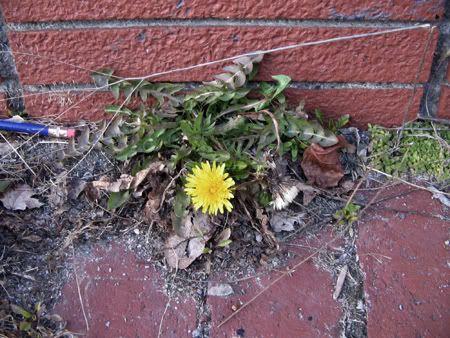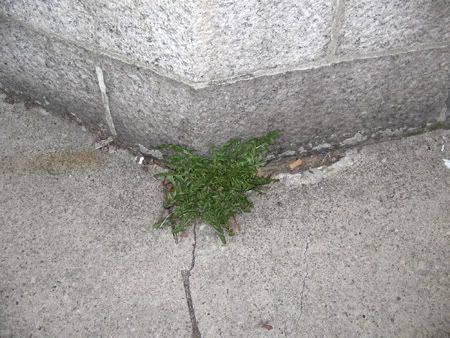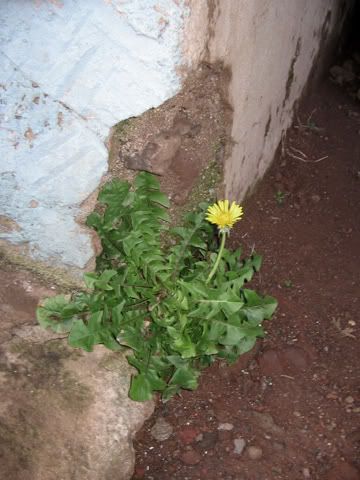365 Urban Species. #082: Dandelion

Urban species #082: Dandelion Taraxacum officinale
"All hail King Weed!"* That's what I thought to myself today after I photographed the first dandelion bloom I saw this year, in the crack of the sidewalk on Mass Ave in Cambridge. Other plants may be more pervasive, more troublesome, or possibly even more widespread than dandelion, but no urban plant captures the essence of what makes a plant a weed, than this familiar yellow flower.
One of the most surprising facts about dandelion is that it was deliberately grown as a food plant for centuries, before it became known as a spoiler of suburban lawns. The exceptionally nutritious (if bitter) foliage is available in high-end supermarkets as "fancy salad greens," and can be cooked and served like spinach. The roots can be eaten as a vegetable, or dried and roasted to extend or substitute for coffee. The flower tops can be deep-fried into fritters, or made into wine. It has herbal uses as a diuretic, mild laxative, and as a cleaner and strengthener for the blood (consult your local herbalist for details).
Dandelion is apomictic, meaning that an embryo can form from a seed that has not been fertilized. The seeds are borne on the wind (often with the encouraging breath of a human child) on a downy parachute. These two facts mean that dandelions can produce offspring a great distance from the parent, without needing to involve pollenating insects or seed-disseminating birds. Dandelion grows early in the season, grows quickly, and can grow in nearly any kind of soil, including, of course, in cracks in the pavement. It's easy to see why it is as widespread and successful as it is.

As a child, my first moment of understanding of how evolution could work (and how human use of the land can affect it) involved dandelion. I noticed that in the shortest-mowed grass, the dandelions flowers had very short stalks, while amongst tall grass around signposts and such, the flowers had very tall stalks. It occurred to me that only short-stalked dandelions would be able to reproduce in a short-mowed lawn. Lawn-mowing is a selective pressure that causes short-stalked dandelions to evolve.
Dandelion is originally native to Europe (possibly Greece), but is naturalized virtually everywhere. After I took the pictures below, I came to the conclusion that, if humans ever build colonies on Mars, within a year there will be dandelions there.
*With apologies to They Might Be Giants, whose song "King Weed" crowns Homo sapiens as the title monarch, but does acknowledge dandelion: "Seems like they grow best right under my shoe."

A crack in the sidewalk, in the island village of Hanga Roa, 2000 miles from any other inhabited land.
